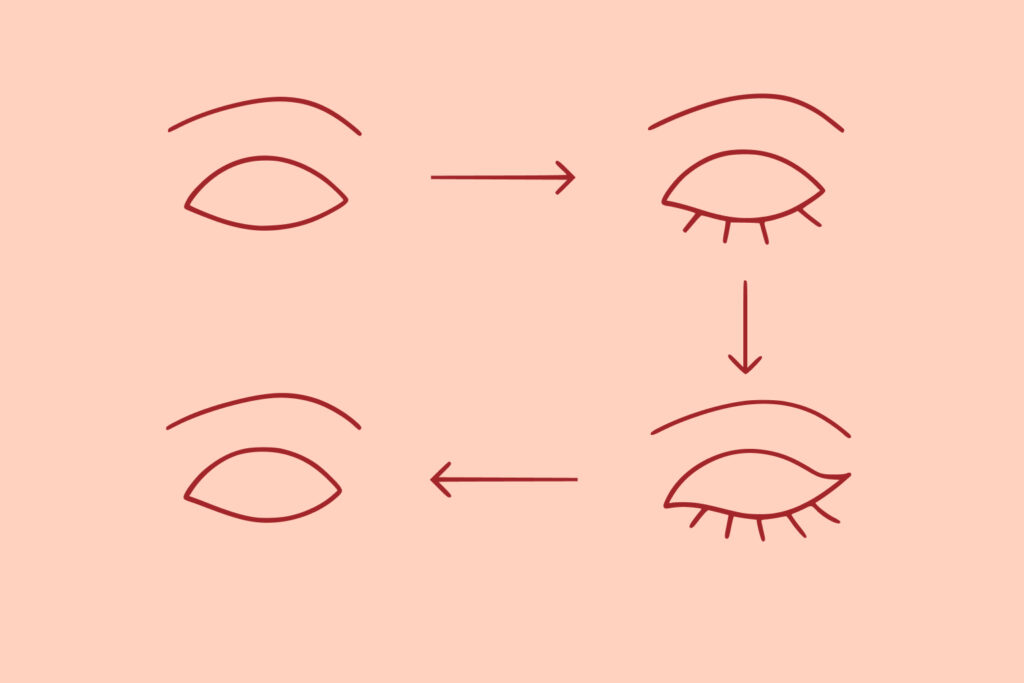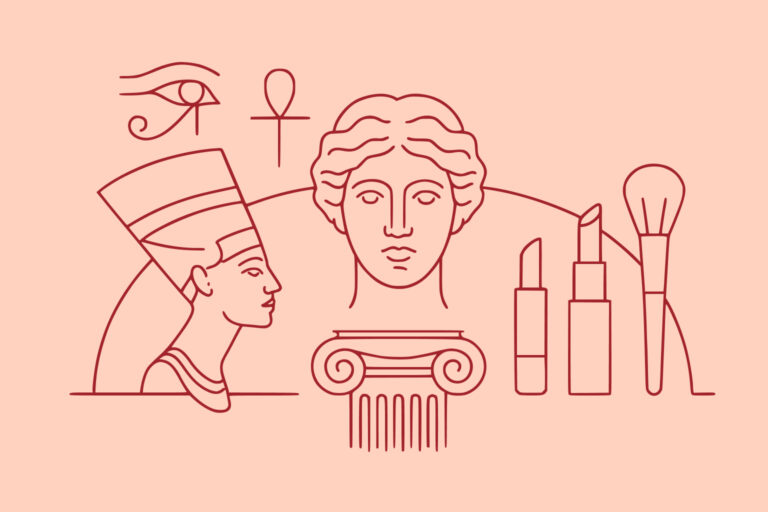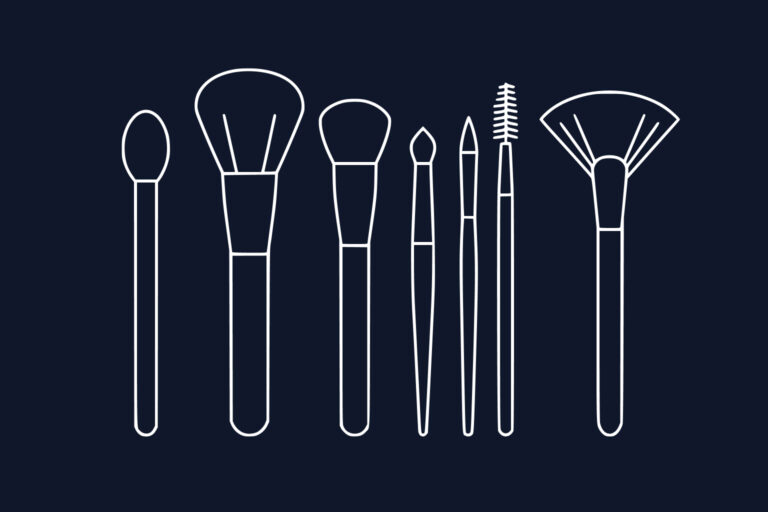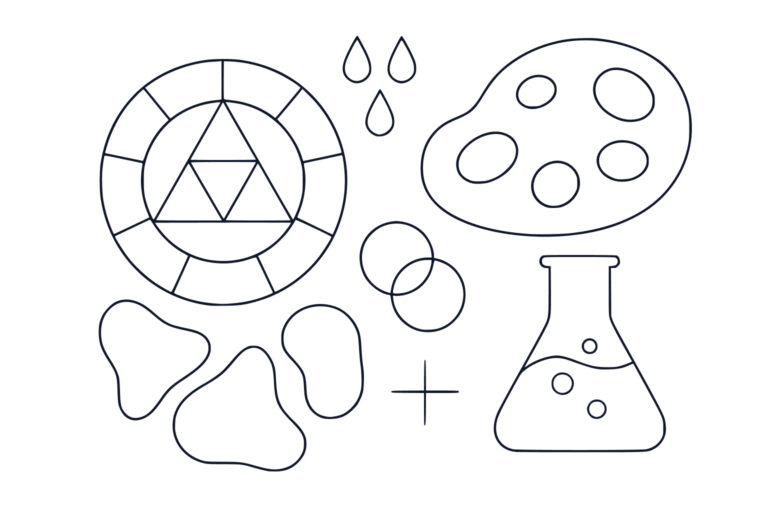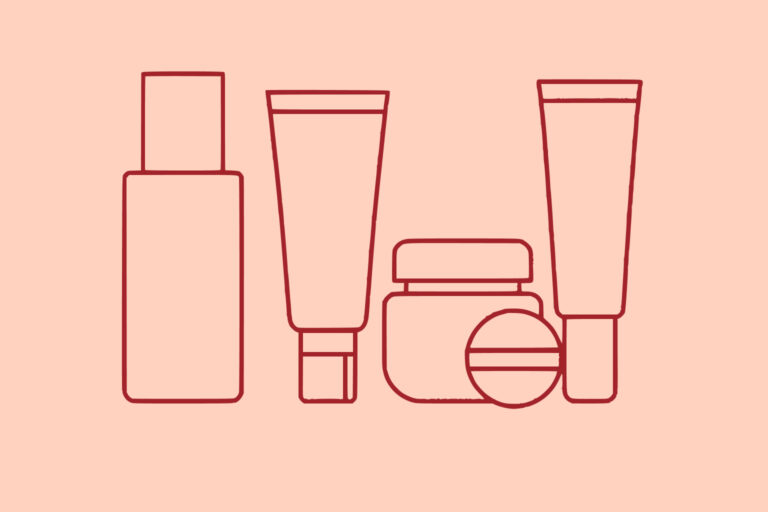Eye Makeup Evolution: From Ancient Kohl to Modern Artistry
Published by Professional Makeup Artist London
The eyes have been called the windows to the soul, and throughout human history, no facial feature has received more cosmetic attention than these expressive organs. From the dramatic kohl-rimmed eyes of ancient Egypt to today’s intricate eyeshadow artistry, eye makeup has served purposes ranging from spiritual protection to social signalling to pure aesthetic enhancement. This journey through the evolution of eye cosmetics reveals not only changing beauty ideals and technological advances, but also the deep human connection between the eyes and identity, power, and allure. Understanding this rich heritage helps modern makeup artists appreciate the cultural significance and artistic potential of eye enhancement techniques.
Ancient Origins: The Sacred and Protective Power of Kohl
The story of eye makeup begins in ancient Mesopotamia and Egypt, where the application of dark pigments around the eyes served both practical and spiritual purposes. These early civilisations understood that enhancing the eyes could transform not only appearance but also provide protection and convey social status.
Ancient Egyptian eye makeup represents perhaps the most iconic and influential tradition in cosmetic history. Both men and women of all social classes wore kohl, a dark pigment made from galena (lead sulphide), antimony, soot, and other minerals. This wasn’t merely decorative—Egyptians believed that kohl provided protection against the evil eye, enhanced vision, and honoured the gods, particularly the falcon-headed Horus, whose eyes represented the sun and moon.
The practical benefits of ancient kohl were significant. The dark pigments helped reduce glare from the intense desert sun, similar to how modern athletes use eye black. The antimony-based formulations also had antibacterial properties that helped prevent eye infections, making kohl both a cosmetic and a medicine.
Egyptian kohl application was an art form that required skill and precision. The pigment was ground to a fine powder and mixed with animal fats or plant oils to create a smooth paste. Application tools included ivory, wood, or metal sticks that allowed for precise line drawing around the eyes. The characteristic Egyptian eye shape—with dramatic extensions beyond the natural eye shape—became an iconic look that continues to influence modern makeup.
Ancient Mesopotamian cultures developed their own eye makeup traditions, using similar materials but with different aesthetic goals. Sumerian and Babylonian eye makeup often emphasised the natural eye shape rather than extending it dramatically, creating looks that were bold yet more naturalistic than their Egyptian counterparts.
The influence of these ancient traditions extends far beyond their historical period, establishing fundamental principles of eye enhancement that continue to inform modern makeup application techniques and aesthetic choices.
Classical Antiquity: Greek and Roman Refinements
The ancient Greeks and Romans brought new sophistication to eye makeup whilst developing complex social attitudes about cosmetic use that would influence Western beauty culture for millennia. Their innovations in formulation and application techniques established many practices that remain relevant today.
Ancient Greek eye makeup was characterised by restraint and naturalness, reflecting the culture’s emphasis on harmony and proportion. Greek women typically used subtle applications of kohl to define their eyes without dramatic extension or obvious artifice. They developed techniques for creating the appearance of larger, more luminous eyes through careful placement of dark and light pigments.
The Greeks introduced the use of white lead and chalk as highlighting agents around the eyes, creating contrast that made the eyes appear brighter and more prominent. They also used crushed berries and plant dyes to add subtle colour to the eyelids, prefiguring modern eyeshadow techniques.
Roman eye makeup was more elaborate and varied than Greek practices, reflecting the empire’s wealth and cultural diversity. Roman women had access to a wider range of pigments and materials, including imported ingredients from across the known world. They developed more sophisticated colour palettes and application techniques that allowed for greater creativity and personal expression.
Roman innovations included the use of mica and crushed pearls to create shimmering effects on the eyelids, early versions of modern glitter and metallic eyeshadows. They also developed better preservation methods for eye cosmetics, allowing for longer-lasting formulations that maintained their quality over time.
The Roman emphasis on luxury and display led to more dramatic eye makeup styles that showcased wealth and status. Elaborate eye decoration became a way to demonstrate social position and cultural sophistication, establishing patterns that would recur throughout history.
Both Greek and Roman cultures contributed to the development of tools and techniques for eye makeup application, including improved brushes, applicators, and storage containers that made cosmetic use more convenient and hygienic.
Medieval Decline and Eastern Continuity
The fall of the Roman Empire and the rise of Christianity brought significant changes to European cosmetic practices, including a dramatic decline in eye makeup use. However, other cultures continued to develop and refine eye enhancement techniques during this period, preserving and advancing cosmetic knowledge.
Medieval European Christianity associated elaborate makeup with vanity and moral corruption, leading to centuries of suppressed cosmetic use. Eye makeup, in particular, was viewed as sexually provocative and inappropriate for virtuous women. This religious opposition created a cultural shift that would influence European beauty practices for nearly a thousand years.
Despite official disapproval, some eye makeup use continued in medieval Europe, particularly among performers, courtesans, and in private settings. These underground practices kept cosmetic knowledge alive during a period of official suppression, ensuring that techniques and formulations weren’t completely lost.
Islamic cultures during the medieval period maintained and advanced eye makeup traditions, particularly the use of kohl and other eye cosmetics. Islamic scholars and physicians wrote extensively about cosmetic formulations, preserving ancient knowledge whilst developing new techniques and ingredients.
The Islamic world’s extensive trade networks allowed for the exchange of cosmetic ingredients and techniques across vast geographical areas, leading to innovations in eye makeup that combined traditions from Africa, Asia, and the Middle East.
Asian cultures, particularly in China and India, developed their own distinctive eye makeup traditions during this period. Chinese opera makeup included elaborate eye decoration that influenced both theatrical and daily beauty practices, whilst Indian traditions incorporated eye makeup into religious and cultural ceremonies.
The preservation and development of eye makeup techniques in non-European cultures during the medieval period ensured that this cosmetic art form continued to evolve, setting the stage for its eventual revival in European culture.
Renaissance Revival: Artistic Innovation and Cultural Change
The Renaissance brought a dramatic revival of interest in beauty and cosmetics, including sophisticated eye makeup techniques that reflected the period’s emphasis on art, culture, and individual expression. Tudor and Renaissance beauty practices elevated eye enhancement to new levels of artistry and complexity.
Renaissance artists’ understanding of perspective, light, and shadow directly influenced eye makeup techniques of the period. Court painters documented elaborate eye decoration that showed how cosmetics were used to create idealised beauty that matched artistic representations.
The Renaissance ideal of beauty emphasised large, luminous eyes that conveyed intelligence and virtue. Women used various techniques to create the appearance of larger eyes, including strategic placement of light and dark pigments, careful eyebrow shaping, and the use of belladonna drops to dilate the pupils.
Venetian women became particularly famous for their eye makeup artistry, developing techniques that combined Italian artistic sensibilities with imported ingredients from the expanding global trade networks. Venetian eye makeup often featured subtle colour and sophisticated blending that demonstrated advanced technical skill.
The Renaissance period saw significant innovations in eye makeup formulation, including the development of longer-lasting pigments and more sophisticated binding agents that allowed for more durable and comfortable wear.
Court makeup artists of the Renaissance were among the first professional practitioners of eye enhancement, developing techniques that would influence beauty practices for centuries to come. Their work established eye makeup as both an art form and a practical beauty technique.
The Renaissance emphasis on individual expression and artistic achievement created an environment where eye makeup could flourish as a form of personal and cultural statement, setting the stage for future developments in cosmetic artistry.
18th Century Extravagance: Powder, Patches, and Theatrical Eyes
The 18th century brought new levels of extravagance to eye makeup, with elaborate techniques that reflected the period’s love of artifice, luxury, and theatrical display. This era saw the development of eye enhancement methods that were both sophisticated and dramatically obvious.
The heavy use of white powder during the 18th century created a stark canvas that made eye makeup appear more dramatic and defined. Women would apply dark kohl and coloured pigments against this white background, creating striking contrasts that emphasised the eyes’ shape and colour.
Beauty patches played an important role in 18th-century eye enhancement, with small fabric shapes strategically placed around the eyes to draw attention and create the illusion of different eye shapes. These patches could make eyes appear larger, more almond-shaped, or more dramatically positioned on the face.
The 18th century saw the introduction of more sophisticated colour palettes for eye makeup, including the use of blue, green, and purple pigments that created dramatic and fashionable effects. These colours were often applied boldly and obviously, reflecting the period’s preference for artificial beauty over natural appearance.
French court makeup artists of this period developed particularly elaborate eye enhancement techniques that influenced fashion throughout Europe. The French approach to eye makeup emphasised drama, luxury, and artistic sophistication that matched the elaborate fashions and architecture of the period.
The development of better mirrors and lighting during the 18th century allowed for more precise eye makeup application, leading to increasingly sophisticated techniques and more detailed decoration.
Theatrical influences became increasingly important during this period, with stage makeup techniques influencing daily beauty practices and creating more dramatic approaches to eye enhancement.
19th Century Transformation: From Excess to Restraint
The 19th century witnessed dramatic changes in eye makeup practices, moving from the elaborate artifice of the 18th century to the natural beauty ideals that characterised Victorian culture. This transformation reflected broader social and cultural changes that influenced all aspects of beauty and fashion.
The early 19th century saw a reaction against the elaborate makeup styles of the previous era, with new emphasis on natural beauty and moral virtue that discouraged obvious cosmetic use. This shift particularly affected eye makeup, which was seen as potentially deceptive and morally questionable.
Victorian women developed subtle eye enhancement techniques that improved their appearance whilst maintaining the illusion of natural beauty. These methods included careful eyebrow grooming, the use of very light applications of kohl, and techniques for making the eyes appear brighter and more luminous without obvious makeup.
The Victorian emphasis on health and virtue led to the development of eye makeup formulations that were marketed as beneficial rather than merely decorative. These products promised to strengthen the eyes, improve vision, or provide other health benefits whilst subtly enhancing appearance.
The development of photography during the Victorian era influenced eye makeup techniques, as women learned how their eyes appeared in photographs and adjusted their enhancement methods accordingly. This led to more sophisticated understanding of how eye makeup translated to different media.
Despite public disapproval of obvious makeup, a thriving underground market for eye cosmetics existed throughout the Victorian period. Women developed ingenious methods for obtaining and using eye makeup whilst maintaining social respectability.
The late Victorian period saw the beginning of commercial eye makeup production, with companies developing products that could be marketed to respectable women whilst maintaining the fiction that they were health aids rather than cosmetics.
Early 20th Century Revolution: Cinema and Mass Culture
The early 20th century brought revolutionary changes to eye makeup through the influence of cinema, changing social attitudes, and new manufacturing technologies. This period saw the transformation of eye enhancement from a niche practice to a mass-market phenomenon.
The emergence of cinema created new demands for eye makeup that could withstand close-up photography and dramatic lighting. Early film makeup artists developed techniques that made actors’ eyes clearly visible and expressive on screen, leading to innovations that would influence mainstream beauty culture.
Silent films placed particular emphasis on eye expression, as actors had to convey emotion without dialogue. This led to the development of dramatic eye makeup techniques that exaggerated natural eye shape and expression, creating the iconic looks of early film stars.
The 1920s brought a complete transformation in eye makeup acceptance and style, with the flapper movement embracing bold, dramatic eye enhancement as a symbol of women’s liberation and rebellion against traditional values. Dark, heavily lined eyes became fashionable, often accompanied by thin, dramatically shaped eyebrows.
Max Factor and other pioneers of the cosmetics industry developed new eye makeup products specifically for film and stage that were later adapted for consumer use. These innovations included improved mascaras, eyeshadows, and eyeliners that provided better performance and easier application.
The influence of exotic cultures, particularly Egyptian and Middle Eastern aesthetics, became popular during this period, leading to revival of ancient eye makeup techniques adapted for modern use. This cultural borrowing created new aesthetic possibilities whilst connecting modern practices to historical traditions.
The development of mass production techniques made eye makeup more affordable and accessible to average consumers, democratising beauty practices that had previously been available only to the wealthy.
Hollywood’s Golden Age: Defining Modern Eye Makeup
The 1930s and 1940s represented the golden age of Hollywood glamour, when eye makeup reached new heights of sophistication and artistry. This period established many of the techniques and aesthetic principles that continue to influence modern makeup artistry.
Hollywood makeup artists of this era were true innovators who developed eye enhancement techniques that could create dramatic transformation whilst appearing natural on screen. They understood how to use colour, line, and shading to completely reshape eye appearance and create the iconic looks that defined Hollywood glamour.
Stars like Greta Garbo, Marlene Dietrich, and Joan Crawford became famous not only for their acting but also for their distinctive eye makeup looks that showcased advanced enhancement techniques. These looks were created by skilled makeup artists who understood how to enhance each star’s unique eye shape whilst creating a cohesive aesthetic that defined their screen persona.
The development of Technicolor film in the 1930s required new approaches to eye makeup, as artists had to consider how their work would appear in full colour rather than black and white. This led to more sophisticated understanding of colour theory in eye enhancement and the development of new product formulations.
The 1940s brought wartime influences to eye makeup, with practical considerations affecting both product availability and aesthetic choices. Women learned to create dramatic eye looks using limited resources, leading to innovative techniques and simplified application methods.
The influence of Hollywood glamour on mainstream beauty culture brought sophisticated eye makeup techniques to a broader audience, though most women adopted simplified versions of the elaborate looks created for film stars.
This period established many of the fundamental techniques for modern eye makeup, including methods for eyeshadow application, eyeliner placement, and mascara use that remain relevant today.
Mid-Century Evolution: Television and Changing Ideals
The 1950s and 1960s brought new challenges and opportunities for eye makeup through the emergence of television, changing beauty ideals, and evolving social attitudes. This period saw significant innovation in both products and techniques.
Television makeup required different approaches than film, as the medium’s characteristics demanded adjustments to traditional eye enhancement methods. Makeup artists had to develop techniques that would appear natural on television whilst still providing the definition and expression that performers required.
The 1950s emphasis on feminine perfection led to refined eye makeup techniques that enhanced natural beauty whilst maintaining an appearance of effortless elegance. This period saw the development of more subtle approaches to eye enhancement that complemented the era’s preference for polished, sophisticated beauty.
The 1960s brought dramatic changes to eye makeup with the emergence of mod fashion and youth culture. The period’s emphasis on bold, graphic makeup styles led to revolutionary approaches to eye enhancement, including the famous “Twiggy look” with its dramatic false eyelashes and pale eyeshadow.
The development of new cosmetic products during this period, including improved mascaras, eyeshadows, and eyeliners, made sophisticated eye makeup more accessible to average consumers. These innovations included waterproof formulations, new colour options, and easier application methods.
Fashion photography’s growing influence on beauty culture also affected eye makeup techniques, as makeup artists learned to create looks that would photograph well under various lighting conditions and for different types of publications.
The 1960s also saw the beginning of more experimental and artistic approaches to eye makeup, with some artists treating the eye area as a canvas for creative expression rather than simply enhancement of natural features.
The 1970s and 1980s: Disco Glamour and Bold Expression
The 1970s and 1980s brought bold new approaches to eye makeup that reflected the era’s dramatic fashion and cultural changes. This period saw the development of more obvious and theatrical eye enhancement techniques that complemented the decades’ emphasis on glamour and self-expression.
Disco culture of the 1970s embraced dramatic eye makeup that included bold colours, metallic finishes, and glittering effects designed to look striking under dance floor lighting. These techniques used strong contrasts and reflective elements to create eye looks that would be visible and attractive in nightclub environments.
The 1970s also saw the influence of various cultural movements on eye makeup, including hippie culture’s embrace of natural and ethnic-inspired looks, punk culture’s adoption of dramatic and rebellious eye enhancement, and glam rock’s theatrical and androgynous approaches to eye decoration.
The 1980s brought even more dramatic approaches to eye makeup, with bold colours, strong lines, and obvious enhancement becoming fashionable. This period saw the popularisation of bright blue, purple, and green eyeshadows, dramatic eyeliner application, and voluminous mascara effects.
The emergence of music videos and MTV culture brought new visibility to dramatic eye makeup techniques, with artists and performers showcasing elaborate eye enhancement that influenced mainstream beauty trends.
Advances in cosmetic technology during this period, including the development of new pigments, formulations, and application tools, allowed for more dramatic and long-lasting eye makeup effects. These innovations made it possible to create the bold, colourful looks that defined 1980s beauty.
The influence of drag culture on mainstream beauty during this period also affected eye makeup techniques, as drag artists’ advanced eye enhancement methods began to influence conventional makeup artistry.
The 1990s and 2000s: Minimalism and Technology
The 1990s brought a reaction against the bold excess of the 1980s, with new emphasis on minimalism and natural beauty that influenced eye makeup trends. This period also saw significant technological advances that improved product performance and application techniques.
Grunge culture of the early 1990s influenced eye makeup with its emphasis on smudged, imperfect application and muted colour palettes. This aesthetic celebrated the appearance of effortless, slightly dishevelled beauty that contrasted sharply with the polished perfection of previous decades.
The mid-1990s saw the emergence of “heroin chic” and other minimalist beauty trends that emphasised natural eye enhancement with subtle colours and understated application. This period favoured neutral eyeshadows, thin eyeliner application, and natural-looking mascara effects.
The late 1990s and early 2000s brought new interest in colour and experimentation, with the emergence of more playful and creative approaches to eye makeup. This period saw the popularisation of coloured mascaras, glittery eyeshadows, and more adventurous colour combinations.
Technological advances during this period included the development of long-wearing formulations, waterproof products, and new application tools that improved the performance and convenience of eye makeup. These innovations made it possible to create looks that lasted longer and performed better under various conditions.
The influence of celebrity culture and red carpet fashion brought new attention to eye makeup artistry, with professional makeup artists gaining recognition for their creative work and innovative techniques.
The emergence of the internet began to change how eye makeup techniques were shared and learned, with early beauty websites and forums providing new platforms for education and inspiration.
The Digital Age: Social Media and Modern Innovation
The 21st century has brought unprecedented changes to eye makeup through the influence of digital media, social networking, and new cosmetic technologies. This period has seen the democratisation of advanced makeup techniques and the development of new approaches to eye enhancement.
The emergence of high-definition television and digital photography required makeup artists to develop new eye enhancement techniques that would appear flawless under intense scrutiny. These demands led to innovations in product formulation and application methods that created more precise and natural-looking results.
Social media platforms, particularly Instagram and YouTube, have revolutionised how eye makeup techniques are shared and learned. Makeup artists and enthusiasts can now share detailed tutorials and techniques with global audiences, leading to rapid innovation and evolution in eye enhancement methods.
The influence of beauty bloggers and social media influencers has brought dramatic eye makeup techniques into mainstream beauty culture, with many people adopting elaborate eye enhancement routines for their daily makeup looks.
The development of new cosmetic products specifically designed for eye makeup, including long-wearing formulations, new colour options, and innovative application tools, has made sophisticated eye enhancement more accessible to average consumers.
Modern understanding of eye anatomy and colour theory, combined with advances in cosmetic chemistry, has led to more sophisticated and effective eye makeup techniques that can create dramatic transformation whilst maintaining natural appearance.
The emergence of new aesthetic movements, including the “Instagram brow” trend, cut crease techniques, and elaborate eyeshadow artistry, has pushed the boundaries of what’s possible with eye makeup and created new standards for technical skill and creativity.
Contemporary eye makeup benefits from understanding both historical techniques and modern innovations, combining traditional artistry with cutting-edge products and methods. This synthesis creates opportunities for both subtle enhancement and dramatic artistic expression.
Cultural Diversity and Global Influences
Modern eye makeup has been enriched by increased awareness and appreciation of diverse cultural traditions and techniques from around the world. This globalisation of beauty culture has led to new hybrid approaches that combine elements from different traditions.
Asian beauty cultures have contributed significantly to modern eye makeup techniques, particularly methods for creating the appearance of larger eyes, enhancing monolid eye shapes, and achieving precise, graphic eyeliner application. These techniques have been adapted and adopted by makeup artists worldwide.
Middle Eastern and South Asian traditions of elaborate eye decoration have influenced contemporary makeup artistry, bringing new appreciation for bold colours, intricate designs, and dramatic enhancement techniques.
African and African diaspora beauty traditions have contributed to modern understanding of how eye makeup works with different skin tones and eye shapes, leading to more inclusive product development and application techniques.
The influence of drag culture on mainstream beauty has been particularly significant in eye makeup, with drag artists’ advanced techniques for dramatic transformation influencing conventional makeup artistry and pushing the boundaries of what’s possible with eye enhancement.
Understanding cultural diversity in eye makeup helps modern makeup artists work sensitively with clients from different backgrounds whilst appreciating the rich global heritage of eye enhancement techniques.
The cross-cultural exchange of eye makeup techniques through social media and international fashion has created new opportunities for innovation and creativity whilst fostering greater appreciation for diverse beauty traditions.
The Science and Art of Modern Eye Makeup
Contemporary eye makeup combines scientific understanding of anatomy, colour theory, and product chemistry with artistic creativity and cultural awareness. This synthesis has led to more sophisticated and effective approaches to eye enhancement.
Understanding eye anatomy is crucial for effective eye makeup application, as different eye shapes require different enhancement techniques. Modern makeup artists study facial structure and proportions to create looks that enhance individual features rather than applying generic techniques.
Colour theory plays an important role in modern eye makeup, with understanding of how different colours interact with eye colour, skin tone, and lighting conditions. This knowledge allows for more strategic colour selection and application that enhances natural features.
Advances in cosmetic chemistry have led to products with improved performance, safety, and versatility. Modern eye makeup products offer better colour payoff, longer wear, and more comfortable application than ever before.
The psychology of eye makeup has also become better understood, with research into how eye enhancement affects perception, confidence, and social interaction. This understanding informs both product development and application techniques.
Modern eye makeup artistry combines technical skill with creative vision, treating the eye area as a canvas for artistic expression whilst respecting the functional and aesthetic needs of the wearer.
The integration of technology into eye makeup, including apps for colour matching and virtual try-on experiences, is changing how products are selected and techniques are learned.
Future Trends and Innovations
The future of eye makeup promises continued innovation through new technologies, changing beauty ideals, and evolving cultural attitudes towards cosmetics and self-expression.
Advances in cosmetic chemistry may lead to products with enhanced performance characteristics, including longer wear, better colour payoff, and improved comfort. Smart cosmetics that respond to environmental conditions or biometric data may become reality.
Sustainable and clean beauty movements are influencing eye makeup development, leading to formulations with natural ingredients and environmentally responsible packaging that don’t compromise on performance.
Personalisation and customisation technologies may allow for bespoke eye makeup products tailored to individual eye shape, colour, and preferences. This could revolutionise how eye cosmetics are formulated and marketed.
Virtual and augmented reality technologies may change how eye makeup is applied and experienced, with new tools for visualisation, education, and application assistance.
The continued influence of social media and digital culture will likely drive further innovation in eye makeup techniques and aesthetics, with new trends emerging from global creative communities.
Understanding both the historical foundations and future possibilities of eye makeup helps contemporary artists and enthusiasts appreciate the rich heritage and exciting potential of this most expressive form of cosmetic artistry.
Conclusion
The evolution of eye makeup from ancient kohl to modern artistry tells a fascinating story of human creativity, cultural change, and the enduring power of the eyes to communicate and captivate. From the protective and spiritual functions of ancient eye cosmetics to today’s elaborate artistic expressions, eye enhancement has served as a constant companion in humanity’s quest for beauty, identity, and self-expression.
Understanding this rich history enriches our appreciation of modern eye makeup and helps us recognise the cultural forces that continue to shape beauty trends and techniques. The journey from ancient pigments to contemporary formulations shows how technological innovation and cultural evolution have combined to create increasingly sophisticated and diverse approaches to eye enhancement.
As we look towards the future, eye makeup will undoubtedly continue to evolve, embracing new technologies, sustainable practices, and diverse beauty ideals. The lessons of history remind us that while products and techniques may change, the fundamental human desire to enhance and express ourselves through the artful decoration of our eyes remains a constant thread connecting past, present, and future.
Whether exploring the broader history of cosmetics or mastering contemporary application techniques, understanding eye makeup’s evolution provides valuable context for appreciating this most expressive of beauty arts. From ancient temples to modern social media, the power of enhanced eyes to transform, communicate, and inspire continues to captivate and influence human culture.
